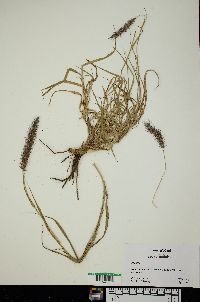
|
|
|
|
Family: Poaceae
[Cenchrus aequiglumis Chiov., more] |
|

Development of the Consortium of Pacific Herbaria and several of the specimen databases have been
supported by National Science Foundation Grants (BRC 1057303,
ADBC 1304924
and ADBC1115116).
Data Usage Policy. Continued support provided by the Symbiota Support Hub, a domain of iDigBio (NSF Award #2027654).
Copyright 2015 University of Hawai‘i.


















